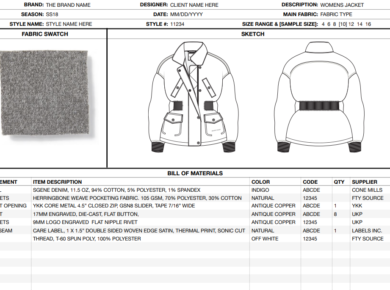When dealing with an overseas supplier, a critical aspect of any discussion is payment terms.
In fact, this is something that you should think about long before even speaking to a supplier, as the incorrect term, can make or break you.
These terms can be daunting for a new buyer, so we will break them down as simply as possible.
In international trade, the most common payment terms for the average buyer are:
- Cash in advance.
- Deposit with balance payable when the order is complete.
- Letters of credit.
- Open account.
Let’s have a brief look at each one!
Cash in advance
Some suppliers, especially for small orders and with inexperienced buyers, ask for 100% cash up front.
There are essentially no pros here for the buyer, as they assume all the risk for supplier nonperformance.
If the supplier makes a mistake on your order or is late in delivering, you essentially have no leverage. The supplier has both your money and your goods.
Any negotiation is in the suppliers favor as they hold all the cards.
In the supplier’s defense, asking for this type of payment method, is usually because they have been burnt by a buyer in the past and lost money. It happens. There are bad suppliers and bad buyers.

However, this term is still not a happy medium, as the buyer assumes all the risk. Even the best-intentioned supplier makes mistakes.
Any term chosen needs to be fair to both the buyer and supplier.
Deposit with balance payable when the order is complete
This is a very common payment method. Essentially the buyer and supplier agree on a percentage of the total value of the order that the buyer pays in advance (usually by TT). When the order is complete, the buyer pays the balance owing and the goods are shipped.
Using this term, both the buyer and supplier take up some risk.
The first thing is to agree on the deposit percentage.
In the opinion of many, the percentage should cover most of the suppliers fixed costs for the order. The problem here is that the supplier’s risk is minimal. Even if the buyer does not pay the balance (usually due to the fault of the supplier, such as a quality issue, late delivery, incorrect product standard, etc.), the supplier still has the deposit, which covers most of their costs as mentioned above.
In addition, the buyer also has the product, which they can still sell. If you are on LinkedIn, you will see plenty of cancelled orders offered for sale.
We therefore suggest a deposit percentage between 20% and 40%, depending on the product in question. The supplier needs to accept some risk.
The actual percentage will depend on some back and forth negotiation. Be prepared for this.
Letters of credit
In the simplest terms what happens here is as follows.
- The buyer gives the full order amount to their bank.
- The buyer’s bank gets in touch with the supplier’s bank, and sends them the money.
- The supplier’s bank calls the supplier to tell them they have the money.
- The supplier will then start the order, knowing they will get paid if they meet their obligations made to the buyer.
As, we said this is the simplest explanation. For more detail, you can check this link!
It is important to keep in mind the following.
- Letters of credit have a cost. Depending on who bears all the costs, this can have an effect on prices. For more detail on this, check the link already posted.
- The buyer’s and seller’s banks credibility play a part. It is best for both buyer and seller to bank with what is known as a “Prime Bank”. For the top 1 000 banks in the world, click on this link. Simply put, there are some banks out there with very lax regulations and bad reputations. As with anything involving your money, you would not want to deal with these banks.
- There are cash flow implications. As a buyer, the entire value of the order usually needs to be paid in advance to your bank. This essentially ties this cash up. With a deposit only, you still have a portion of the order value in hand to use for day to day business activities. You just need to ensure it is available when it is time to pay for your order.
- Letters of credit have conditions that both buyer and supplier need to agree on. This can take some time and negotiation.
- The process between the banks takes time. Essentially it should not take more than a week, but for some banks it can take a few weeks. This timeframe needs to be taken into account, as the supplier is only obligated to proceed once the letter of credit is finalized.
Open account
As the name suggests, the supplier will ship the goods, and they will be received by the buyer before the buyer pays anything. Usually, the buyer needs to pay within an agreed upon period. Usually 30, 60, or 90 days.
As a buyer this had huge advantages. The most obvious one being cash flow related. No deposits, no money tied up in a Letter of Credit, and most importantly, the buyer can sell the goods prior to paying the supplier.
However, all the risk sits with the supplier, so not many suppliers will offer this term. Suppliers that do offer this term need to consider a number of factors, most importantly the competitiveness of the industry.
In highly competitive industries, the supplier may be open to this payment term for fear of losing the business to another supplier.
In less competitive industries, buyers often use another payment term, and once trust is built up between the buyer and seller, this payment terms can be discussed. Trust and prompt account settlement by the buyer are factors in using this term. Even though it is a risky term for the supplier, this risk can be reduced. The common methods are factoring and export credit insurance.
Both these ways of reducing risk have a cost to the supplier, so in exchange for this payment term, buyers should be willing to contribute to this cost. The cost is relatively low compared to the benefits received by the buyer if this term is used.
And that’s it!
We hope you found this basic explanation of payment terms useful!
As we mentioned, deciding on the best payment term for your business should be decided on prior to even speaking to a supplier, and should be brought up as soon as possible in your negotiations with suppliers, as the supplier may not be prepared to use the payment term you have chosen.
If this is the case, you have two basic options. Firstly, you can negotiate the terms, or secondly, find a supplier that can meet the term you want.
Once again, happy sourcing from all of us at Sourcing Playground!






